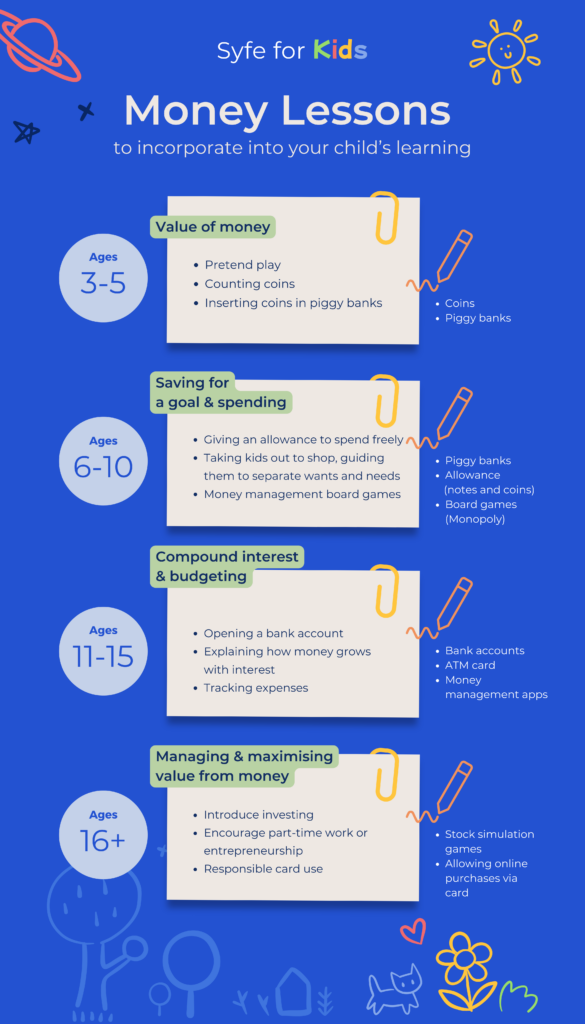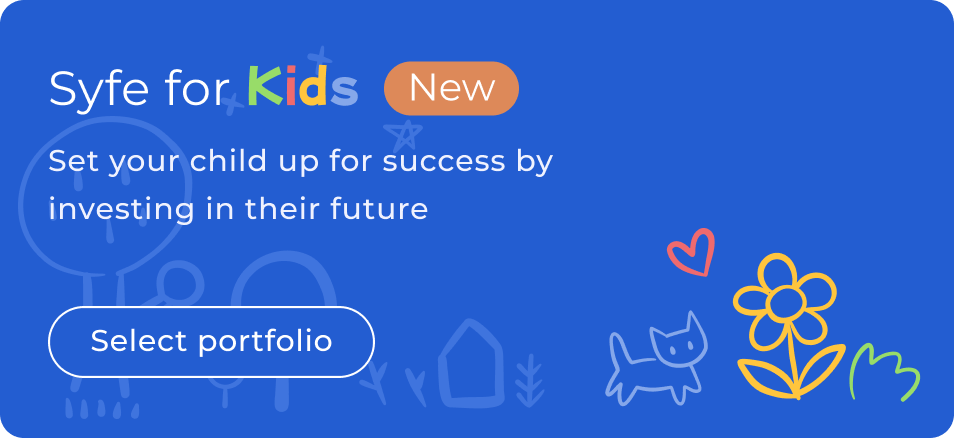It’s never too early to teach kids about money and financial discipline. By doing so, we help them develop healthy financial habits and set the stage for a secure financial future.

In Singapore, it’s pretty common for parents to open a bank account for their newborn right after they’re born and depositing money in every holiday.
But little is done to grow that money after that.
Many parents often find themselves struggling to teach their kids about money. So here’s a guide for parents looking to incorporate money lessons for the little ones.
Money Lessons to Incorporate Into Your Child’s Learning
Ages: 3 to 5 – Understanding value of money
During the early years, children begin to grasp financial concepts. This is a good time to introduce them to the value of money and the idea that it is earned through work.

Start with simple activities such as identifying coins and their values. Get them to sort and create stacks of coins with similar values while counting.
Engage in pretend play by setting up a mini-store and let your child pretend to be the customer or the shopkeeper. Use pretend money and let them practise transactions (buying or selling goods).
Introduce the concept of saving by giving them a piggy bank. Explain that every time they put some money in the piggy bank, they are getting closer to reaching their goal of either buying a candy or an ice-cream.
Ages: 6 to 10 – Start learning the concept of saving and spending
Your kids now understand how money works. Consider giving your child a small weekly allowance. Encourage them to divide their allowance into different categories such as saving, spending and donating for a good cause.
You can help them create a basic budget by setting limits on their spending and encouraging them to save on their large purchases. This instils a sense of discipline, patience, and the satisfaction of achieving targets.

Play fun games like Monopoly or any board games that focus on money management.
Engage your kids when you take them grocery shopping by comparing prices and teaching them how to make informed choices.
Ages: 11 to 15 – Understanding interest and cultivating wise spending habits
This is the perfect time to guide them on how to open their own bank account. Introduce them to the banking system and let them go through the process of form filling to deposit money into their account.
When they receive their monthly bank statements, go through the deposit transactions with them, explain how interest works in a savings account. Show them how their money can grow over time through interest.

Introduce them to budgeting tools that can track expenses and manage finances. Teach them to differentiate between needs and wants, compare prices, and consider the value and long-term benefits of purchases.
Age Group: 16+ – Learning how to manage and maximise value from money
Teenagers in this age group are on the brink of independence and will soon face real financial responsibilities such as managing their own budget or even taking a student loan for further education. This is an ideal time to introduce them to more complex financial concepts.

Teach the power of compounding through savings accounts they already have, or the concept of a stock market. Let them have a feel by getting them to trade stocks on virtual Stock Exchanges on MarketWatch or Investopedia Simulator.
Discuss the importance of responsible credit card use, building credit history, and managing debt wisely. Explain the consequence of not paying credit card bills on time and how that can affect their credit score.
Encourage your teenager to seek part-time jobs or explore entrepreneurial opportunities. This experience will teach them about earning money and the value of hard work.

It’s not just about teaching them discipline, but also setting an example for your kids
Now that you have an idea of how to teach your child about money at various stages of their life, you can set an example by taking their financial journey to the next level with Syfe for Kids.

Syfe now allows you to tag portfolios to your child, invest and watch their money grow overtime. You can collaboratively set financial goals with your child, teaching them the importance of planning for the future. This enables you to not only set their finances up for success, but also allows your child to experience the power of compounding interest and investing first hand. Learn more about our new feature here.
By incorporating money lessons and starting them on a saving, investment portfolio, you not only provide your child with a solid foundation for financial success but also ignite their curiosity about investment strategies and the potential for long-term wealth growth.






You must be logged in to post a comment.